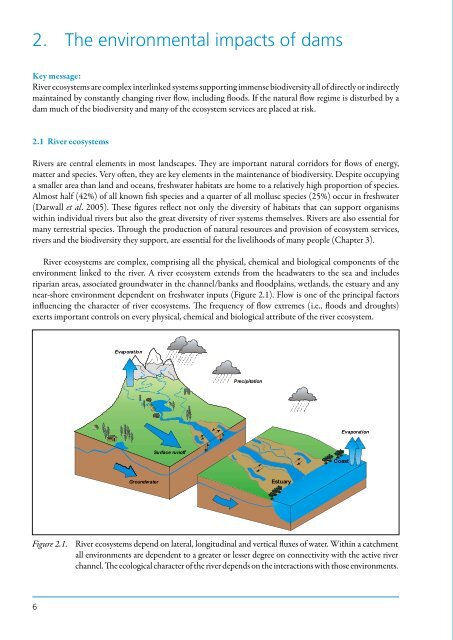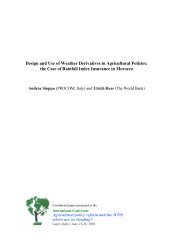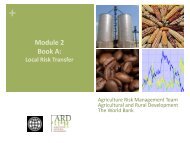Use of decision support systems to improve dam planning and dam ...
Use of decision support systems to improve dam planning and dam ...
Use of decision support systems to improve dam planning and dam ...
Create successful ePaper yourself
Turn your PDF publications into a flip-book with our unique Google optimized e-Paper software.
2. The environmental impacts <strong>of</strong> <strong>dam</strong>s<br />
Key message:<br />
River eco<strong>systems</strong> are complex interlinked <strong>systems</strong> <strong>support</strong>ing immense biodiversity all <strong>of</strong> directly or indirectly<br />
maintained by constantly changing river flow, including floods. If the natural flow regime is disturbed by a<br />
<strong>dam</strong> much <strong>of</strong> the biodiversity <strong>and</strong> many <strong>of</strong> the ecosystem services are placed at risk.<br />
2.1 River eco<strong>systems</strong><br />
Rivers are central elements in most l<strong>and</strong>scapes. They are important natural corridors for flows <strong>of</strong> energy,<br />
matter <strong>and</strong> species. Very <strong>of</strong>ten, they are key elements in the maintenance <strong>of</strong> biodiversity. Despite occupying<br />
a smaller area than l<strong>and</strong> <strong>and</strong> oceans, freshwater habitats are home <strong>to</strong> a relatively high proportion <strong>of</strong> species.<br />
Almost half (42%) <strong>of</strong> all known fish species <strong>and</strong> a quarter <strong>of</strong> all mollusc species (25%) occur in freshwater<br />
(Darwall et al. 2005). These figures reflect not only the diversity <strong>of</strong> habitats that can <strong>support</strong> organisms<br />
within individual rivers but also the great diversity <strong>of</strong> river <strong>systems</strong> themselves. Rivers are also essential for<br />
many terrestrial species. Through the production <strong>of</strong> natural resources <strong>and</strong> provision <strong>of</strong> ecosystem services,<br />
rivers <strong>and</strong> the biodiversity they <strong>support</strong>, are essential for the livelihoods <strong>of</strong> many people (Chapter 3).<br />
River eco<strong>systems</strong> are complex, comprising all the physical, chemical <strong>and</strong> biological components <strong>of</strong> the<br />
environment linked <strong>to</strong> the river. A river ecosystem extends from the headwaters <strong>to</strong> the sea <strong>and</strong> includes<br />
riparian areas, associated groundwater in the channel/banks <strong>and</strong> floodplains, wetl<strong>and</strong>s, the estuary <strong>and</strong> any<br />
near-shore environment dependent on freshwater inputs (Figure 2.1). Flow is one <strong>of</strong> the principal fac<strong>to</strong>rs<br />
influencing the character <strong>of</strong> river eco<strong>systems</strong>. The frequency <strong>of</strong> flow extremes (i.e., floods <strong>and</strong> droughts)<br />
exerts important controls on every physical, chemical <strong>and</strong> biological attribute <strong>of</strong> the river ecosystem.<br />
6<br />
Evaporation<br />
Groundwater<br />
Surface run<strong>of</strong>f<br />
Precipitation<br />
Estuary<br />
Coast<br />
Evaporation<br />
Figure 2.1. River eco<strong>systems</strong> depend on lateral, longitudinal <strong>and</strong> vertical fluxes <strong>of</strong> water. Within a catchment<br />
all environments are dependent <strong>to</strong> a greater or lesser degree on connectivity with the active river<br />
channel. The ecological character <strong>of</strong> the river depends on the interactions with those environments.





